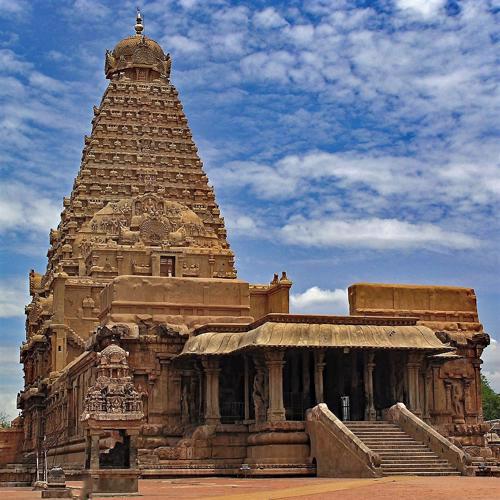Chola Temple Architecture Marks Peak Innovation
- ByBhawana Ojha
- 24 Jul, 2025
- 0 Comments
- 2

Chola architecture reached its peak between the 9th and 12th centuries in South India, following Pallava traditions but introducing breakthroughs in design, scale, and detail. Temples were built mainly from granite replacing weaker brick and featured tall pyramid-like vimanas over the sanctum, such as the 60-meter-high tower at Thanjavur’s Brihadeesvara Temple under Raja Raja Chola.
Temples also included grand gopurams (gateway towers), mandapas (pillared halls), carved niches, and stone water tanks inside the temple boundaries. These served ritual, social, and hydraulic needs. Walls were decorated with sculptures of gods, kings, queens, mythical beasts, and scenes from Hindu epics. Some carvings could include depictions of animals like yazhi along base lines.
Landmark complexes such as Brihadeesvara at Thanjavur, Gangaikonda Cholapuram, and Airavatesvara at Darasuram are recognized as UNESCO World Heritage sites, known as the Great Living Chola Temples. These monuments reflect the height of Chola technical skill and spiritual vision.
Chola temples also served multiple roles—they were centres for learning, economic activity, and culture. Their influence reached beyond South India and even inspired temple styles in Southeast Asia. With lasting engineering, elaborate art, and integrated community use, Chola temple architecture stands as a high watermark in the history of temple design.
Post a comment
40 Countries now Visa-free for Sri Lanka visits - Here's...
- 29 Jul, 2025
- 2
These are the 6 most beautiful Airports in the World...
- 28 Jul, 2025
- 2
Lord Krishna wears a watch in this temple of Jaipur!
- 03 Aug, 2025
- 2
Top countries with best work-life balance!
- 29 Aug, 2025
- 2
Tiger Legends Who Shaped India's Conservation Story
- 27 Jul, 2025
- 2
Categories
Recent News
Daily Newsletter
Get all the top stories from Blogs to keep track.

















